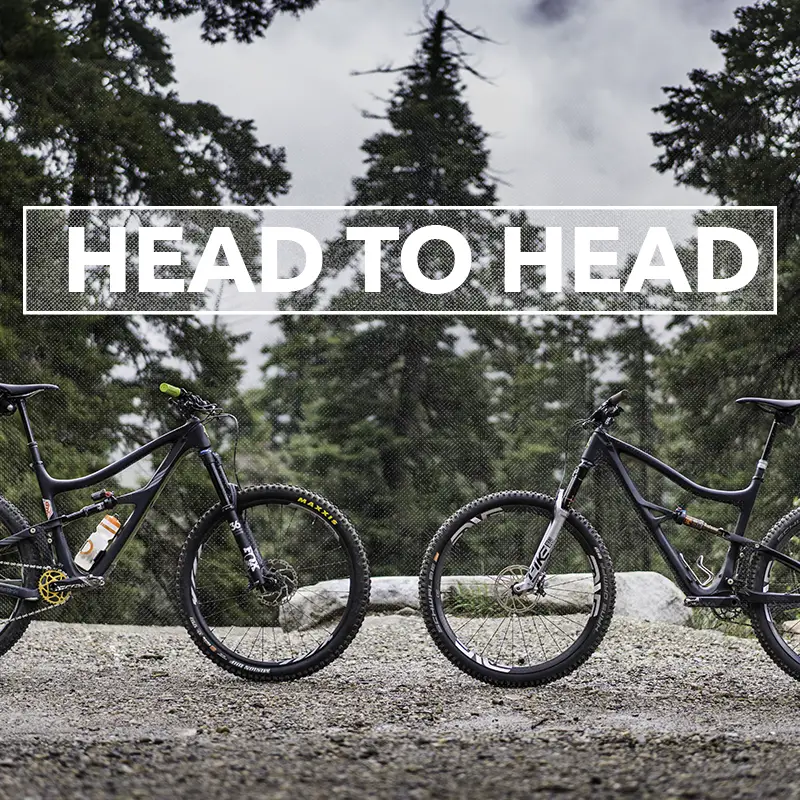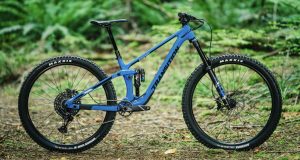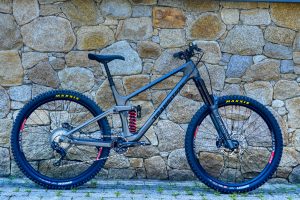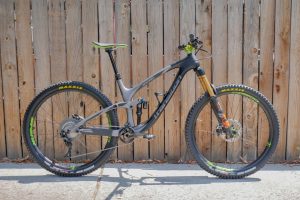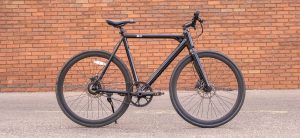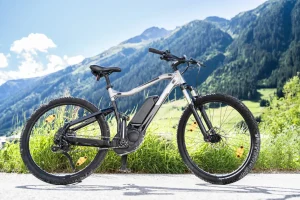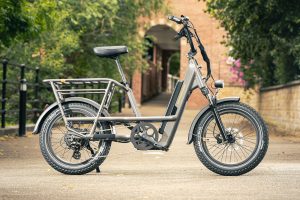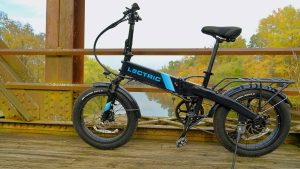Looking to choose between the Ibis Ripmo vs Ripley mountain bikes? Check out our guide highlighting the 10 key differences you need to know before making your decision. From travel distance and suspension design to geometry and wheel size, we cover it all to help you make an informed choice.
If you’re looking for a high-quality mountain bike that’s designed to handle tough terrain, you’ve probably come across the Ibis Ripmo vs Ripley. What distinguishes these two bikes—which are among the most well-liked on the market—from one another?We’ll go through the 10 main distinctions in this article to assist you choose which one is best for you.
The Ibis Ripmo is a longer-travel enduro bike, designed for aggressive riding and descending, with 160mm of front travel and 147mm of rear travel.
On the other hand, the Ibis Ripley is a shorter-travel trail bike, designed for efficient climbing and all-around performance, with 130mm of front travel and 120mm of rear travel.
While both bikes share some design elements, such as the DW-link suspension system and carbon fiber frame construction, they are optimized for different riding styles and terrain.
Overview of Ibis Ripmo vs Ripley
The Ibis Ripmo and Ripley are two high-end mountain bikes designed for aggressive trail riding. Both bikes are designed to handle technical terrain, but they have some significant differences that set them apart. The Ripmo is designed for more aggressive riders who want a bike that can handle enduro racing, while the Ripley is a more traditional trail bike that’s suitable for a wider range of riders.

Ibis Ripmo Review
The Ibis Ripmo is a high-end enduro mountain bike designed for aggressive riding and descending. It features 160mm of front travel and 147mm of rear travel, making it suitable for tackling rough and technical terrain. The bike’s carbon fiber frame is light and stiff, with a DW-link suspension system that provides excellent pedaling efficiency and traction. The geometry is longer and slacker than the Ibis Ripley, with a low bottom bracket and a slack head tube angle for increased stability at speed. Overall, the Ibis Ripmo is a top-of-the-line option for riders looking to push their limits on challenging trails.
Ibis Ripley Review
The Ibis Ripley is a versatile trail bike designed for efficient climbing and all-around performance. Its front and rear travel distances of 130mm and 120mm, respectively, make it perfect for a variety of terrain. The bike’s carbon fiber frame is lightweight and responsive, with a DW-link suspension system that provides excellent traction and control on technical sections. The geometry is shorter and steeper than the Ibis Ripmo, with a higher bottom bracket and a steeper head tube angle for better climbing ability. Overall, the Ibis Ripley is a great option for riders looking for a nimble and responsive bike that can handle a variety of trail conditions.
Geometry and Frame Design
One of the biggest differences between the Ripmo and Ripley is their geometry and frame design. Here are some of the key differences to be aware of:
Head Tube Angle
The head tube angle on the Ripmo is slightly slacker than the Ripley, which makes it more stable at high speeds and on steep descents. The Ripmo has a head tube angle of 64.9 degrees, while the Ripley has a head tube angle of 67.4 degrees.
Seat Tube Angle
The seat tube angle on the Ripmo is steeper than the Ripley, which puts the rider in a more aggressive position for climbing. The Ripmo has a seat tube angle of 76 degrees, while the Ripley has a seat tube angle of 74 degrees.
Wheelbase and Reach
The Ripmo has a longer wheelbase and reach than the Ripley, which makes it more stable and easier to control at high speeds. The Ripmo has a wheelbase of 1,275mm and a reach of 470mm, while the Ripley has a wheelbase of 1,184mm and a reach of 425mm.

Suspension System
The suspension system is another key difference between the Ripmo and Ripley. Here are some of the key differences to be aware of:
Shock Placement
The Ripmo has a vertical shock placement, while the Ripley has a horizontal shock placement. This gives the Ripmo a more progressive suspension feel, which is ideal for aggressive riding, while the Ripley has a more traditional suspension feel that’s better suited to a wider range of riders.
Travel
The Ripmo has more travel than the Ripley, which makes it better suited for aggressive riding on technical terrain. The Ripmo has 147mm of rear travel and 160mm of front travel, while the Ripley has 120mm of rear travel and 130mm of front travel.
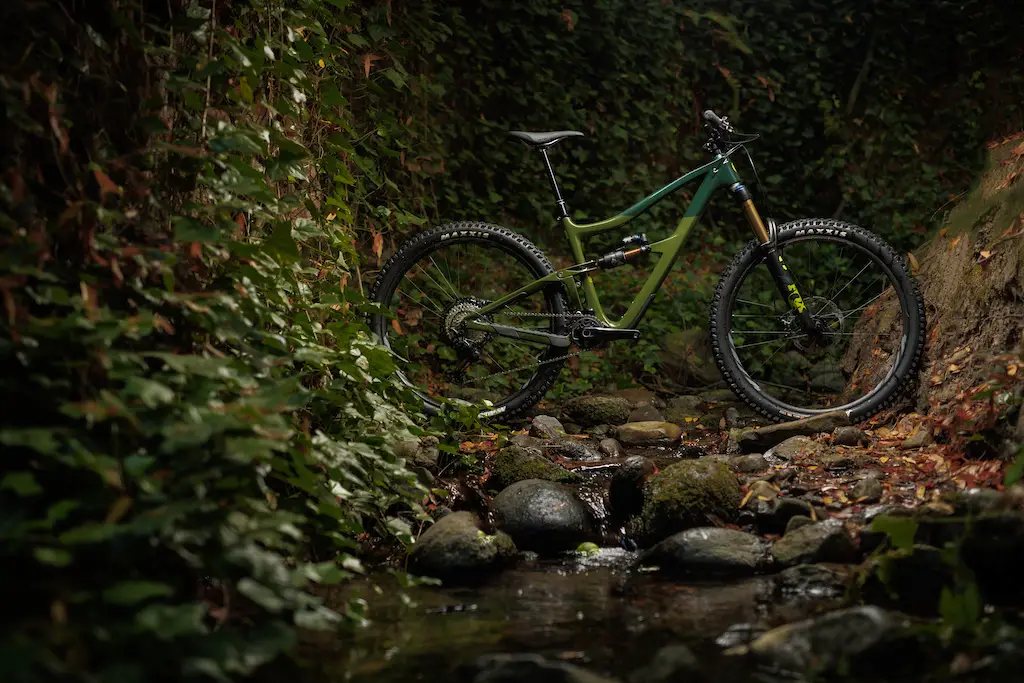
Drivetrain and Brakes
The drivetrain and brakes are also different on the Ripmo and Ripley. Here are some of the key differences to be aware of:
Gear Range
The Ripmo has a wider gear range than the Ripley, which makes it better suited for aggressive riding on technical terrain. The Ripmo features a 12-speed drivetrain with a 10-52T cassette, while the Ripley has an 11-speed drivetrain with a 10-50T cassette. This means that the Ripmo has a higher top gear and a lower climbing gear, which can make a big difference when riding on steep terrain.
Brake Type
The Ripmo and Ripley also differ in their brake type. The Ripmo features hydraulic disc brakes, while the Ripley features mechanical disc brakes. Hydraulic brakes offer more consistent and powerful stopping power, making them a better choice for aggressive riding.
Wheel and Tire Size
Another key difference between the Ripmo and Ripley is their wheel and tire size. Here’s what you need to know:
The Ripmo is designed to accommodate 27.5-inch or 29-inch wheels and up to 2.6-inch tires. The Ripley, on the other hand, is designed for 29-inch wheels and up to 2.6-inch tires. This means that the Ripmo offers more versatility in terms of wheel and tire size.
Frame Material
The Ripmo and Ripley also differ in their frame material. The Ripmo features a carbon fiber frame, while the Ripley is available in both carbon fiber and aluminum. Carbon fiber frames are lighter and stiffer than aluminum frames, making them a better choice for aggressive riding.
Weight
Weight is another important factor to consider when choosing between the Ripmo and Ripley. Here are the weight differences between the two bikes:
The Ripmo weighs around 30 pounds, while the Ripley weighs around 27 pounds. While the Ripmo is heavier, it’s important to note that it’s also designed for more aggressive riding and features a more robust frame and suspension system.
Price
The Ripmo and Ripley also differ in price. The Ripmo is more expensive than the Ripley due to its more advanced features and technology. The Ripmo typically costs around $4,200, while the Ripley costs around $3,300.
Which One Should You Choose?
Choosing between the Ripmo and Ripley ultimately depends on your riding style and preferences. If you’re an aggressive rider looking for a bike that can handle tough terrain and enduro racing, the Ripmo is the better choice. The Ripley is a great option if you’re a more casual rider looking for a versatile trail bike.
Side-by-Side comparison of the Ibis Ripmo and Ripley mountain bikes
| Feature | Ibis Ripmo | Ibis Ripley |
|---|---|---|
| Travel distance | 160mm front / 147mm rear | 130mm front / 120mm rear |
| Suspension design | DW-link | DW-link |
| Frame material | Carbon fiber | Carbon fiber |
| Wheel size | 29″ | 29″ |
| Geometry | Longer, slacker | Shorter, steeper |
| Recommended use | Enduro / aggressive riding | Trail / all-around performance |
| Wheelbase | 1226mm – 1311mm (size-dependent) | 1135mm – 1207mm (size-dependent) |
| Head tube angle | 64.9° – 65.9° (size-dependent) | 66.5° – 67.4° (size-dependent) |
| Seat tube angle | 76.1° – 76.8° (size-dependent) | 76.2° – 76.9° (size-dependent) |
| Weight (claimed) | 30.5 – 31.2 lbs (depending on build) | 27.2 – 29.0 lbs (depending on build) |
CHART THAT SHOWS HOW COOL EACH BIKE IS

Conclusion
The Ibis Ripmo and Ripley are two high-quality mountain bikes that offer unique features and benefits. When deciding which bike is best for you, you can make an informed choice if you know the main distinctions between the two.
Related Topics:
- Is Trek Marlin 4 A Reliable Bike? (Trek Marlin 4 Review)
- Trek Fuel EX 5 vs 7: Which Mountain Bike is Better for You?
- Trek Fuel EX 7 vs 8: Which is the Best Mountain Bike for You?
- Cannondale Trail 5 Vs Trail 6 Bike Best Comparision
FAQs
What type of riding is the Ripmo best suited for?
The Ripmo is best suited for aggressive riding and enduro racing.
What type of riding is the Ripley best suited for?
The Ripley is best suited for casual and versatile trail riding.
Can the Ripmo accommodate different wheel and tire sizes?
Yes, the Ripmo can accommodate both 27.5-inch and 29-inch wheels and up to 2.6-inch tires.
What is the weight difference between the Ripmo and Ripley?
The Ripmo weighs around 30 pounds, while the Ripley weighs around 27 pounds.
What is the price difference between the Ripmo and Ripley?
The Ripmo typically costs around $4,200, while the Ripley costs around $3,300.
